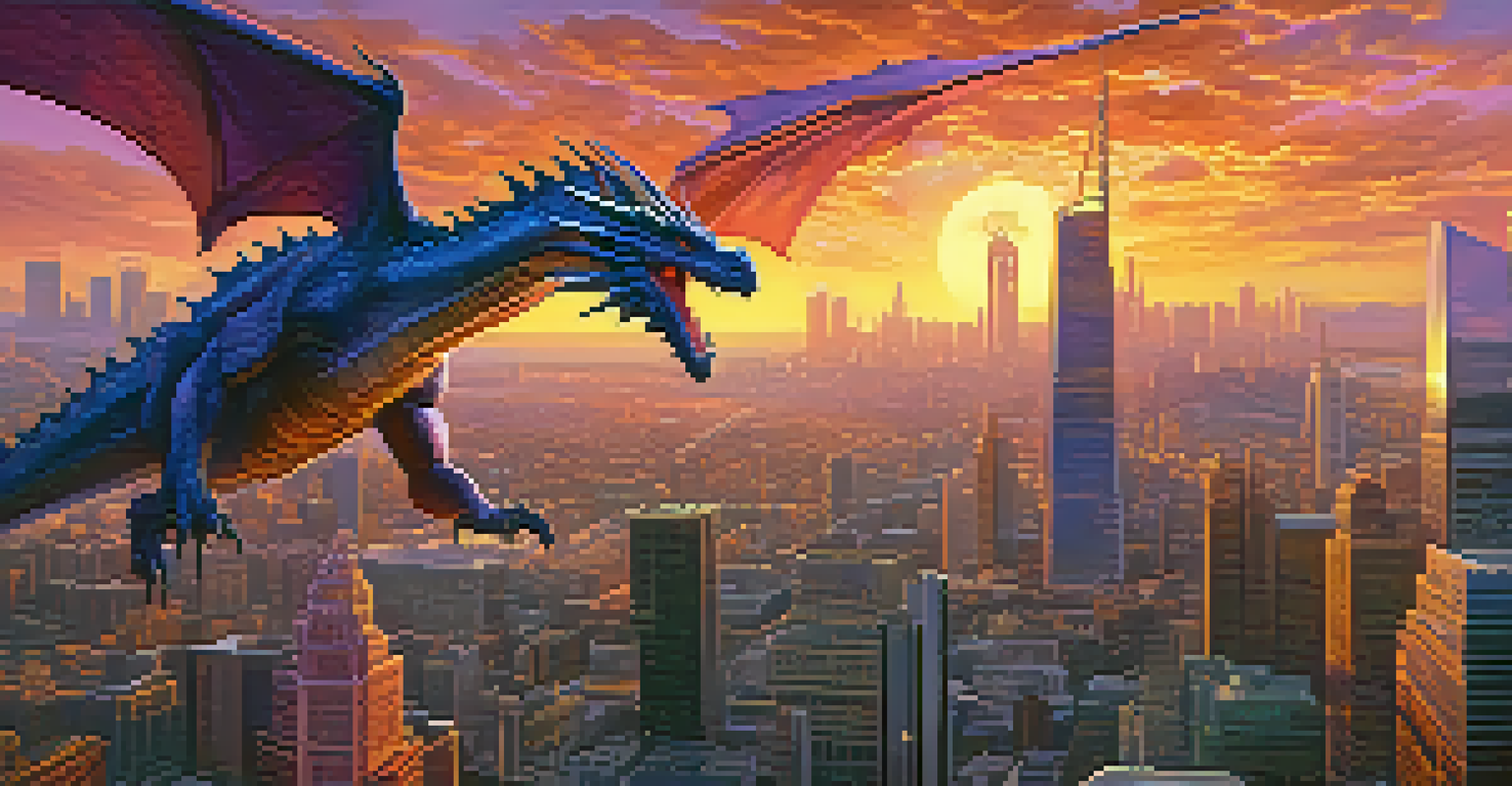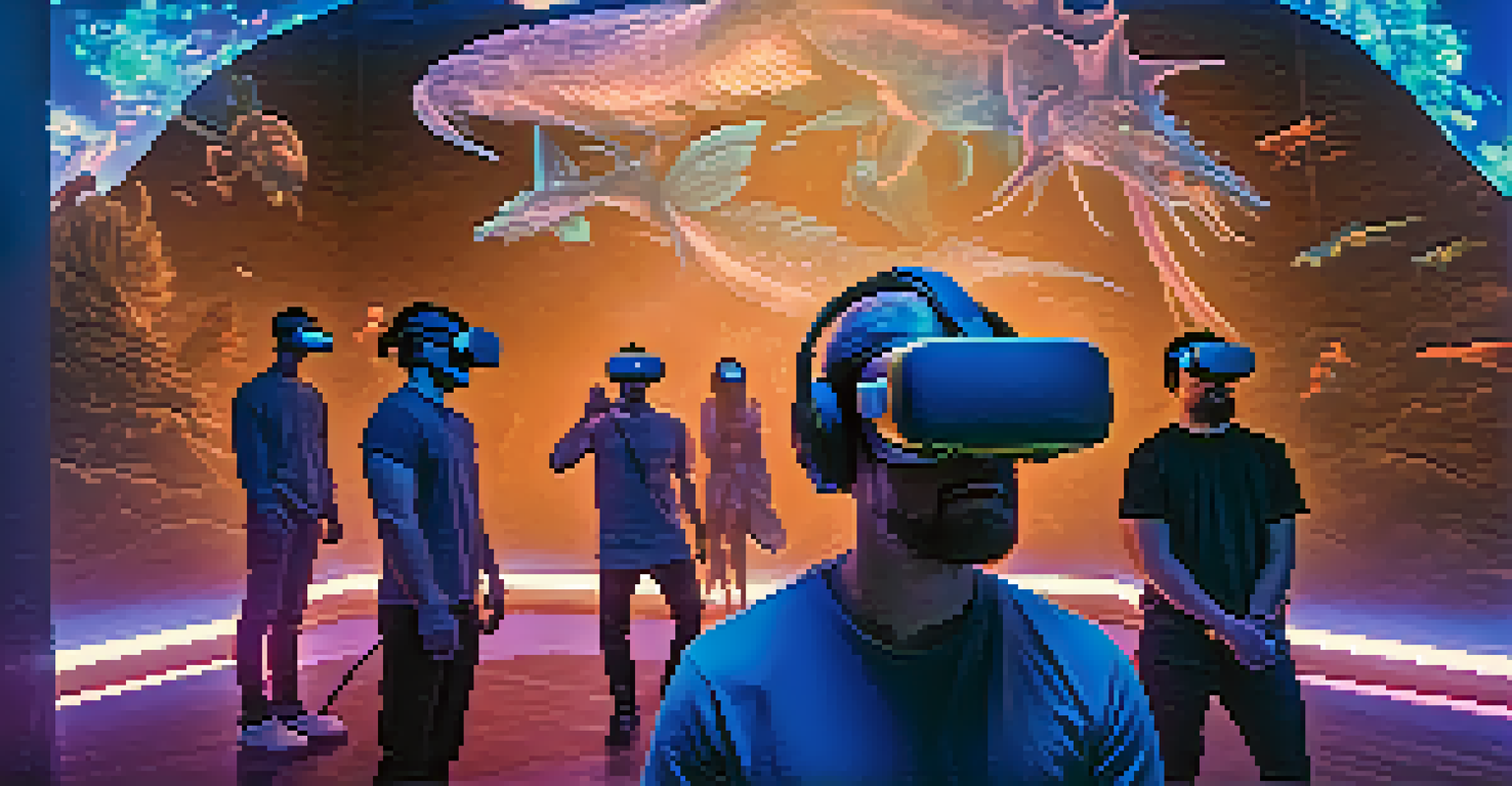Visual Effects Artists: Crafting Realism in Fantasy Films

The Role of Visual Effects Artists in Film Production
Visual effects artists play a crucial role in the filmmaking process, bridging the gap between imagination and reality. They are the creative minds behind the scenes, responsible for creating stunning visuals that enhance storytelling. From designing fantastical creatures to crafting immersive environments, their work is vital in making unbelievable scenarios seem believable.
Visual effects are not just about creating illusions; they are about creating a reality that the audience can believe in.
Their expertise combines art and technology, allowing them to manipulate images and create effects that are often impossible to capture on camera. By collaborating closely with directors and cinematographers, visual effects artists ensure that each shot aligns with the film's vision. This teamwork is essential in creating a cohesive experience for the audience.
As films have evolved, so too has the role of visual effects artists. With advancements in technology, their toolkit now includes sophisticated software and hardware that enable them to produce more intricate and realistic effects. This evolution not only expands their creative capabilities but also changes the audience's expectations of what is possible on screen.
Techniques Used by Visual Effects Artists
Visual effects artists employ a variety of techniques to bring their visions to life, often starting with concept art and storyboards. This initial phase helps them visualize the scenes and establish a clear direction. Once the concept is approved, they move on to 3D modeling and animation, which allows them to create detailed representations of characters and environments.

One popular technique is compositing, where multiple layers of images are combined to create a single, cohesive shot. This can involve blending live-action footage with CGI (computer-generated imagery) elements, enabling artists to create a seamless narrative. For example, in a fantasy film, a visual effects artist might blend a dragon soaring through a cityscape with actual footage of the city.
Visual Effects Artists Enhance Films
Visual effects artists are essential in bridging imagination and reality, creating stunning visuals that elevate storytelling.
Another important technique is motion capture, where live actors' movements are recorded and used to animate digital characters. This method adds a layer of realism to the animated figures, making them appear more lifelike. By using these techniques, visual effects artists can effectively transport audiences to entirely new worlds while maintaining a believable experience.
The Importance of Collaboration in VFX
Collaboration is at the heart of successful visual effects production. Visual effects artists often work alongside various departments, including production design, cinematography, and sound. This teamwork ensures that every element of the film aligns, creating a unified vision that captivates viewers.
The best visual effects are the ones that the audience doesn't even notice; they simply enhance the storytelling.
For instance, during the filming of a fantasy movie, the visual effects team collaborates with the cinematographers to determine how to best capture the lighting and atmosphere needed for their effects. This cooperation extends to the acting team as well, as artists may provide guidance on how actors should interact with CGI elements to ensure authenticity in their performances.
Moreover, the feedback loop between directors and visual effects artists is crucial. Directors provide insights into their vision, while artists use their expertise to suggest practical solutions. This ongoing dialogue helps refine the final product, resulting in a film that not only meets but exceeds audience expectations.
Challenges Faced by Visual Effects Artists
Despite their creativity and skill, visual effects artists face numerous challenges in their work. One significant hurdle is the pressure to meet tight deadlines while maintaining high-quality output. With numerous projects often overlapping, the demand for quick turnaround can lead to intense work environments.
Additionally, technological limitations can pose challenges. While tools and software continue to advance, artists must constantly adapt to new technologies and techniques. This necessity for ongoing learning can be daunting, especially when working on high-stakes projects where any misstep could impact the film's success.
Collaboration Fuels VFX Success
Effective collaboration among visual effects artists, directors, and other departments is crucial for achieving a cohesive cinematic vision.
Finally, there’s the challenge of audience perception. As viewers become increasingly savvy about visual effects, they may develop heightened expectations for realism. This shift means that artists must continuously push the boundaries of their craft to deliver visuals that not only impress but also resonate with the audience.
The Evolution of Visual Effects in Film
The field of visual effects has seen significant evolution since the early days of cinema. Initially relying on practical effects, such as miniatures and matte paintings, filmmakers created illusions that amazed audiences. As technology advanced, the introduction of CGI revolutionized the industry, allowing for more complex and imaginative visuals.
Movies like 'Jurassic Park' marked a turning point, showcasing the potential of CGI to create lifelike creatures that captivated viewers. This shift opened the floodgates for filmmakers to explore new storytelling possibilities, leading to a surge in fantasy and science fiction films that relied heavily on visual effects.
Today, visual effects artists are not only tasked with enhancing realism but also with inventing entirely new worlds. As audiences seek more immersive experiences, the demand for innovative visual storytelling continues to grow, pushing artists to explore uncharted territory in their craft.
Famous Visual Effects Artists and Their Impact
Throughout film history, many visual effects artists have made their mark, pushing the boundaries of what is possible on screen. For instance, Dennis Muren, a pioneer in the field, is known for his groundbreaking work on 'Star Wars' and 'Jurassic Park.' His innovative techniques have inspired countless artists and changed the landscape of visual effects.
Another notable figure is ILM's (Industrial Light & Magic) John Knoll, who played a key role in developing visual effects for the 'Star Wars' franchise and later 'Avatar.' His contributions exemplify how creative thinking and technical expertise can come together to produce stunning visuals that resonate with audiences.
Challenges in the VFX Industry
Visual effects artists face pressures from tight deadlines, technological demands, and evolving audience expectations for realism.
These artists not only shape the films we love but also mentor the next generation of visual effects talent. By sharing their knowledge and experiences, they help nurture a vibrant community of artists who continue to innovate and push the boundaries of visual storytelling.
The Future of Visual Effects in Fantasy Films
As technology continues to evolve, the future of visual effects in fantasy films looks promising. Emerging technologies like virtual reality (VR) and augmented reality (AR) are opening new avenues for storytelling, allowing audiences to engage with content in ways never before imagined. These advancements hold the potential to create experiences that blend the real and the fantastical seamlessly.
Furthermore, artificial intelligence (AI) is beginning to play a role in visual effects production, streamlining processes and enhancing creativity. Artists can leverage AI to generate complex simulations and optimize workflows, ultimately allowing for more time spent on the creative aspects of their work.

As we look ahead, the importance of visual effects artists will only grow. Their ability to craft realism in fantasy films will continue to be essential in captivating audiences and bringing extraordinary stories to life. With each new technology, they are challenged to innovate, ensuring that the magic of cinema endures for generations to come.